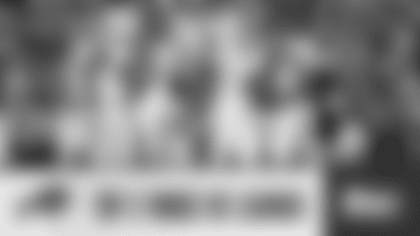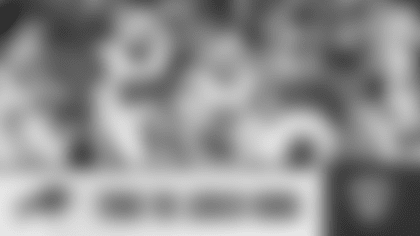Every summer leading up to training camp Buffalobills.com asks 25 of the most pressing questions facing the team as they make their final preparations for the upcoming regular season. With Year 3 under head coach Chan Gailey and veteran player report day at St. John Fisher fast approaching, here is the latest daily installment as we closely examine some of the answers the Buffalo Bills have to come up with between July 24th and Sept. 9th.
When he became the first Bills receiver in franchise history to post back-to-back 1,000-yard seasons, he established himself as the team's leader in the passing game. Stevie Johnson is the unquestionable go-to guy in Buffalo's offense when a play needs to be made through the air. Despite his success, particularly against New York's Darrelle Revis, Johnson felt there was something missing from his game last season. That something is at the top of his priority list with respect to his personal game heading into 2012.
Johnson wants to improve his yards after catch figures.
"That's the one thing that I was focused on this offseason when I looked at the stats," Johnson told Buffalobills.com.
The Bills top receiving target finished a respectable 19th in the league among receivers in total yards after catch with 342, but it was his yards after catch per reception that really bothered him. Averaging just 4.5 yards after the catch left Johnson 40th in the league among wideouts.
Of course there was a pretty good reason why he ranked so low in that category. Playing with a torn groin the entire season compromised his ability to escape and pull away from defenders.
"With the groin it was more a thought of, 'I know this guy is going to catch me.' My level of confidence was basically low because I felt with a torn groin I had to do a lot of cutting back across the field instead of just trying to outrun somebody," said Johnson. "When I'd be out there I'd be thinking about making the catch and then get what I can and get down. What the mentality should be is get the catch and try to take it all the way to the house. It was different with that injury."
Johnson averaged 13.2 yards per catch in 2011, but with only 4.5 yards coming after the reception he believes he can do much better. After returning to the practice field late in spring workouts coming off groin surgery he's confident he'll be able to get to work right away on getting more yards after the catch is made.
"I want to be able double that," Johnson said bluntly. "I want to up that number to show that I have a complete game. All those elite guys are getting those yards after catch. So anything up around 10 would be good. That's another first down."
Getting the yards after catch average up around nine or 10 will be no easy task. The top wideout in that category last season was Atlanta's Julio Jones and he managed just 7.9.
Bills head coach Chan Gailey, who values Johnson's game greatly, believes he can improve his yards after catch average, but isn't convinced his top receiver will be able to double it based on the way their offense is structured.
"We're not one of those teams that runs a lot of deep in cuts that allows guys to sometimes to get away from defenders," Gailey told Buffalobills.com. "They have to separate fairly early to get any running space and it's harder to separate in short areas than it is down the field. So there's a lot that plays into it and our system I don't think in the long run allows for him to run for a lot of yards after catch.
"But I will say I think the better he gets as a route runner and create separation and where Fitz is on the same page and the more reps we get in practice to do that, the better he'll be at getting the ball in open spaces and run with it. I think he'll get better. If he can stay healthy the whole year I think he'll improve there."
While the yards after catch average is listed as an individual statistic, Johnson doesn't view it that way. He sees it as a figure that ultimately benefits the team.
"That's only going to help us all out," he said. "As far as getting in position for field goals and touchdowns the less first downs you have to get the better for the offense. So I think yards after catch would be big, not just for myself but for the rest of the squad also."
Of course the personal benefit of increasing his yards after catch average is no longer will 1,000 receiving yards in a season be the target. If he can add just two and a half yards to his yards after the catch average, that 1,000-yard season turns into a 1,200-yard campaign.
"We know he is an extremely good player," said Gailey. "I think he will end up being a great player. I don't use the word until a guy has done it many years. He's got a chance to be a great player before it's over with. If he can pick up where he left off last year, and stay as healthy as possible he can be as productive as he wants to be."







